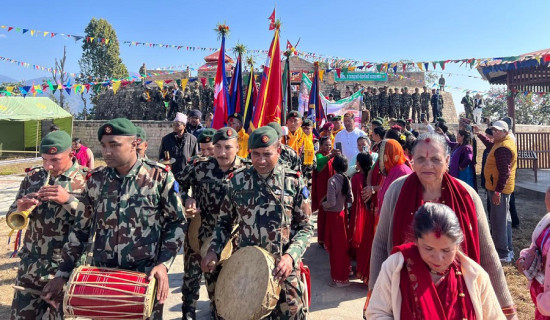- Thursday, 8 January 2026
Prioritise Reforms In School Education
Although Nepal has invested a huge resource in the education sector, its outcomes have not been up to the mark. The underperformance of students who appeared in this year’s Secondary Education Examinations (SEE) shows that the country still has a long way to go when it comes to reforming the school education. The National Education Board (NEB) published this year’s SEE results last week, indicating a poor performance of a majority of students. As the final test of grade 10, the SEE was held about three months ago. No sooner had the NEB made the results public than various sections of society, including educationists, civil society members, parents and politicians, expressed their serious concern over the matter. They have drawn an urgent attention of the authorities concerned towards taking necessary measures for improving the quality of education in schools.
It is distressing that more than half of SEE examinees have become ineligible to pursue their studies in grade 11. According to the results, just 222,472 (47.87 per cent) out of a total of 464,785 students have obtained a Grade Point Average (GPA) exceeding 1.60. Those securing GPA below 1.60 are not qualified for pursuing their higher-level studies. It means as many as 242,313 students (52.13 per cent) have failed in the exams. Those unlucky students can only opt for an 18-month technical education course run by the Centre for Technical Education and Vocation Training (CTEVT). This course has limited streams. Also, everyone interested in this course also cannot get an opportunity owing to a limited seats.
Grading system
The government had introduced a grading system to publish SEE results since 2014 considering poor outcomes in grade 10 test. But this is for the first time that the NEB has decided to categorise the students securing GPA less than 1.60 as non-graded. This provision is based on the Letter Grading System, 2078 B.S. With the implementation of this guideline, students’ detailed performances have begun reappearing in the mark sheets as they used to be before 2014. So, if non-graded students want to study grade 11, they will have to retake their exams and secure the required GPA.
Under this guideline, students must receive at least 35 per cent mark in theory and practical of a subject. It is easier for them to obtain this mark in practical, but difficult in theory. This provision may have been included in the guideline to boost a reading culture among students. In the past, the students securing an aggregate of 35 mark in theory and practical of a subject used to be allowed to enroll in grade 11. This is the reason why such a large number of students have failed in securing the desired GPA.
However, the students who have got a non-grade in up to two subjects can sit for supplementary exams to be held on the upcoming August 2 and 3. Altogether 115,834 students will get this chance this year. Among those having GPA above 1.60 will be allowed to get enrolled in grade 11. Although grade 12 is the final one in the secondary-level education, there is a tendency among students to make up their mind to pursue any particular subject or discipline upon completion of SEE.
Earlier, the final examination of grade 10 was known as SLC (School Leaving Certificate). Many students used to fail in that test due to weak teaching-learning activities in schools and a tougher test system. So, SLC was considered as an ‘Iron Gate.’ During that time, most students used to fail in Mathematics, Science and English because of a lack of competent subject teachers and better learning environment in schools.
Even with the passage of time, the situation does not seem to have changed for the better. Many SEE examinees are still found being unable to get the pass grades in these three subjects. In this year’s SEE as well, nearly 40 per cent of students could not obtain the pass grades in Mathematics. Similarly, the number of students receiving non-grades in Science and English has stood at 126,933, 101,383, respectively.
A lot of students had secured better GPA during the time of COVID-19 as the NEB had just certified the results prepared by schools. The schools, especially private ones, were criticised for giving higher marks to their students only to publicise themselves. In the times of the pandemic, there was a compulsion for the government to entrust schools with the responsibility of assessing their students in SEE because of a growing fear for the transmission of the deadly viral disease.
Looking at the dismal performance of the students in SEE, the policymakers must review the policies while those involved in policy enforcement must assess their working styles. Frequent changes in test patterns are also not helpful for students to perform better. As education is the foundation for a nation’s overall development, it must get a top priority.
Qualified teachers in need
The government has failed to appoint qualified subject teachers in many schools nationwide over the years. About 50,000 new teacher positions from the pre-primary level to grade 12 have still remained vacant. This is hindering the teaching-learning process. The school administration, students, parents and the entire community are also responsible for the dismal SEE results.
Besides, teachers’ direct involvement in party politics is another major factor affecting the school education. In many districts, many school teachers have still been running the political parties they are affiliated to. Bearing this problem in mind, the Ministry of Education, Science and Technology has taken a step to discourage this wrong practice. But it is not an easy task to keep such teachers from party politics because nearly all the political parties seem to have encouraged them to remain more active in politics than in their profession.
(The author is a former deputy executive editor of this daily.)
















